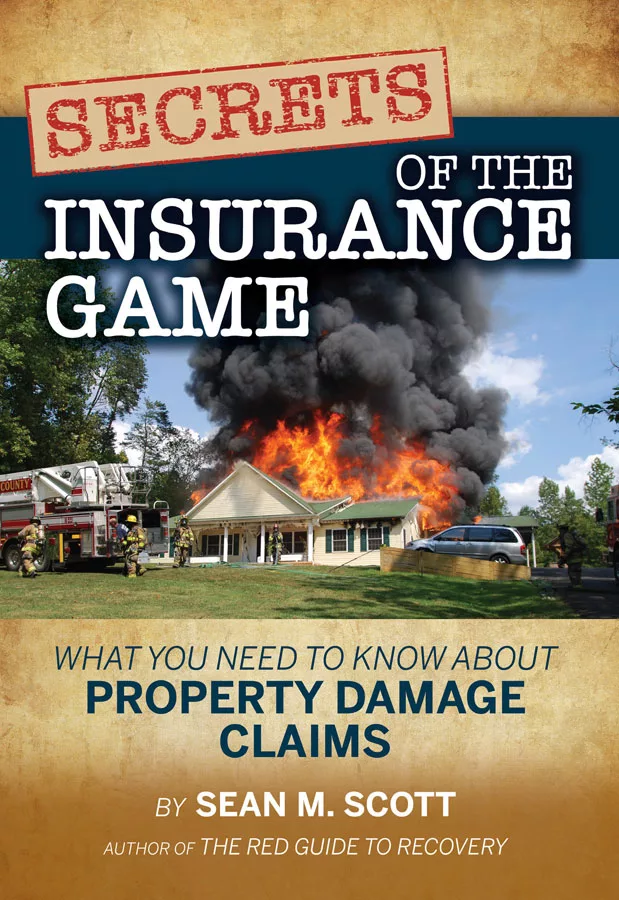Managing the Risks of Disinfectants
A lot of restoration firms have their roots in the cleaning business. As such, they are called in to clean up biohazards with regularity. Ebola decontamination cleanups were in the press a few months ago, but much more common biohazard cleaning jobs involve Category 3 water, the maintenance of hot tubs in hotels, food processing and restaurant facilities, schools, health care facilities, mold remediation jobs and trauma scene cleanup, just to name a few examples where disinfectants are used.
All of these cleaning projects have a couple common risk management characteristics. First, it is important to have trained personnel perform the work. Second, it is important to get your insurance coverage straightened out if you are going to work with disinfectants.
Dan Benazzani’s article in the January edition of R&R magazine, “Truths, Myths and Liability of Misusing Disinfectants” did a good job of clarifying the proper use of disinfectants. This article provides advice on how to manage the risks of disinfectants.
Many firms have much better information available to them on how to clean biohazards than they do on how to get their insurance straight for working with disinfectants. Most firms rely on their insurance agent to help them through the business insurance maze. Here is the problem - there are no classes or books for insurance agents to learn how to insure the biohazards in their customer base, which explains the extraordinarily high fundamental insurance coverage defect rate on firms conducting biohazard cleaning work. In this article, I will provide some simple tips for you to use to figure out on your own if you have insurance coverage issues for biohazard work and how to close those insurance coverage gaps if you do.
There are two root causes for insurance coverage gaps when performing biohazard cleaning services: pollution exclusions and fungi/bacteria-related loss exclusions. These exclusions cut through the insurance commonly purchased by cleaning and restoration firms. They also adversely affect the firms that manufacture and sell the disinfectants used.
The manufactures of cleaners, disinfectants and biostats should have General Liability insurance, including Products Liability for the sales of their products. The General Liability insurance policy for the manufacturer of disinfectants needs to cover Products Pollution Liability and the policy cannot have a fungus or bacteria exclusion that applies to the products they manufacture. Another important feature to have on the manufacturer’s insurance policy is a Vendors Endorsement.
Products Pollution Liability insurance is relatively expensive insurance. To avoid high insurance costs on the vendors that sell the manufacturer’s products, it is common for the distributors of chemical type products to be added to the manufacturer’s Products Liability insurance coverage through the use of a Vendors Endorsement. Where a Products Pollution Liability insurance policy commonly costs $20,000 a vendor’s endorsement to insure the distributor of the manufacturer’s product typically costs about $250.
Relying on a Vendors Endorsement risk management method can work if you are only selling the products of a few manufacturers of cleaning supplies. But it becomes administratively impossible if you are a distributor of cleaning products sourced from many manufactures. In that case you will need your own General Liability policy with Products Pollution Liability coverage.
The major flaw in relying on Vendors Endorsements to manage the risks of cleaning chemical distributors is the insurance provided to the distributor is only as good as the insurance purchased by the manufacturer. The reality is manufacturers are subject to the same restrictions on insurance coverage for biohazards that the contractors utilizing the products have. It is actually common today to find Products Liability insurance sold to a manufacturer of disinfectants that excludes all claims arising from fungi or bacteria. Yes, you read that right - the manufacturer is not insured properly for contamination claims associated with fungi or bacteria. Therefore, anyone depending on the Vendors Endorsement insurance coverage will also be uninsured.
Firms actually performing disinfecting work need General Liability insurance (without a microbial remediation job site exclusion, see below) and a specially designed Contractors Environmental Liability (CEL) insurance policy. That combination of insurance coverage in practice is about as rare on a cleaning and restoration firm as the Products Pollution Liability coverage without a fungus/bacteria exclusion is on the manufacturers of disinfectants. My only explanation for the current state of affairs is the absence of training opportunities for insurance agents on the subject of insuring biohazards. I teach a CE class for insurance agents on this subject that is approved by Insurance Commissioners in 40 states. The class is four hours long. This is not an easy subject for insurance agents to master.
Here is a simple self-help approach to red flag insurance that is not likely to work very well on a liability claim involving damages associated with fungi/bacteria/Category 3 water:
-
Do you have a General Liability (GL) insurance policy separate from your CEL policy? If they are separate insurance policies, you can be 90% sure that the GL policy you purchased has one or more fatal flaws for your disinfecting work. Almost all of the separate GL policies sold to cleaning and restoration contractors today contain a broad exclusion for all losses arising from a job site where the work involves the cleaning of fungus or bacteria. I assume there is a reason you are using disinfectants and it has something to do with fungus or bacteria.
- Look at your CEL policy - are fungus/mold and bacteria listed as insured pollutants? They need to be. If you do not have a CEL policy in place and work with disinfectants, I suggest you call in the work crew before they make a mistake at the job site that causes bodily injury or property damage. You are unlikely to have any insurance coverage at a bio-remediation job under your General Liability insurance. You need to get your insurance straightened out before working with disinfectants.
How did insurance coverage for bio-remediation work with disinfectants get so messed up? It happened by accident in the insurance business. In their zeal to get rid of toxic mold claims, insurance companies adopted far reaching exclusions for fungus or bacteria-related losses on property and liability insurance policies in 2005. The drafters of the fungi/mold/bacteria exclusions had never heard of Category 3 water at the time the exclusions were introduced. Remember Category 3 water is Category 3 water because of the bacteria in it. (See the March and May 2014 issues of R&R for a two-part series on this topic.)
Bacteria triggers exclusions in insurance policies including the “pollution” exclusion. By default, cleaning projects involving a speck of Category 3 water get sucked into the full exclusions on liability insurance policies and sub-limits of coverage as little as $5,000 on property insurance policies for mold/bacteria related losses. Superimpose on that situation that the manufacturers and distributors of disinfectants in the default mode will not have products liability insurance for losses involving mold or bacteria and the risk management picture for firm’s disinfecting things becomes bleak.
The good news is most claims adjusters do not know anything about fungus and bacteria exclusions or Category 3 water and routinely pay technically excluded claims as a result. That situation holds true in almost all small claims. However, in practice, when claims approach $1 million and the lawyers get involved, the insurance companies always get smart on fungi /bacteria exclusions. The national trend is towards more informed claims adjusters on these exclusions.
The use of disinfectants at job sites will usually be targeted towards fungi, bacteria or viruses. Fungi and bacteria are treated separately from viruses in insurance policies today. The most common form of fungi/mold/bacteria exclusion in use today on General Liability insurance policies has two parts. Part a) applies to bodily injury or property damage from exposure to these materials. Part b) excludes losses from a job site that involves cleaning up these materials. When an insurance policy excludes a defined “loss,” the insurance company no longer has to defend the insured if a claim involves the excluded activity. Part b) of a fungi/bacteria exclusion is essentially a “you cannot be in the disinfecting business” exclusion.
We know from reading hundreds of insurance policies actually sold to cleaning and restoration firms that 9 out of 10 General Liability insurance policies provide very glitchy coverage at best for working with disinfectants because of the far-reaching effects for fungi or bacteria exclusions.
That job site exclusion under Part b) in the most common form of fungi/bacteria exclusion endorsement in use today is trouble for anyone working with disinfectants. The insurance gap created by Part a) of the fungi or bacteria exclusion can be addressed with a good quality CEL policy. But there is no way to fix Part b) of the exclusion on the GL policy through the purchase of even the most expensive CEL policy on the planet. The only way to fix the job site exclusion on the GL policy is to fix the GL policy. That is only possible to do in a handful of package insurance policies where the GL and CEL policies are part of the same policy form. Less than 1 out of 10 cleaning and restoration firms today actually have the GL insurance necessary to work with disinfectants.
A more recent trend in insurance coverage is to exclude losses associated with bacteria contamination under Pollution Exclusions. Once bacteria is a defined “pollutant” in an insurance policy, the pollution exclusion is triggered on any loss that involves damages caused by bacteria contamination. The bottom line is most of the General Liability insurance policies sold in the U.S. will exclude bacteria-related losses in at least two places. In contrast, mold is typically excluded only once.
How to manage the risks of microbial cleaning and disinfectants?
- Manufacturers of antimicrobials and disinfectants need to make sure they are covered for Products Pollution Liability and that they do not have separate restrictions on their insurance for losses associated with fungus/mold/bacteria.
- If you are selling the disinfecting products of others to the public, get a Vendors Endorsement from the manufacturer of the disinfectant and make sure the insurance on the manufacturer does not have pollution/fungi/bacteria exclusions which negate the value of that insurance for you.
- If you are a cleaning or restoration firm, train your workers to perform the work in a safe manner. The IICRC S500 and S520 are great source documents for this training. If you do not know what the S500 and S520 documents are, call in the crews working with antimicrobials until you can get them trained.
- Make sure your insurance works for microbial matter work. There is a 90%-plus chance your current insurance policies contain the coverage glitches mentioned above.
- If you find an insurance coverage glitch in your insurance policies, fix it as fast as you can. Affordable insurance solutions specifically designed for cleaning and restoration firms are readily available through local insurance agents. They may cost more than a policy that excludes all losses from a disinfecting job. But if you are working with disinfectants, what value is there in liability insurance that has exclusions for what you do for a living?
Looking for a reprint of this article?
From high-res PDFs to custom plaques, order your copy today!







